From planning leveled guided-math lessons, to guided reading groups, to writer’s workshop, to Daily 5 choices, to math centers, as primary teachers we can be planning and preparing for over 36 lessons/activities each week. If we think about this for too long, it’s WAY overwhelming – right?! So the key is to create predictable patterns and routines that allow for streamlined planning. Today I wanted to share how I make Math Centers manageable. Three years into math-center goodness and I’ve finally found a system that works for me.
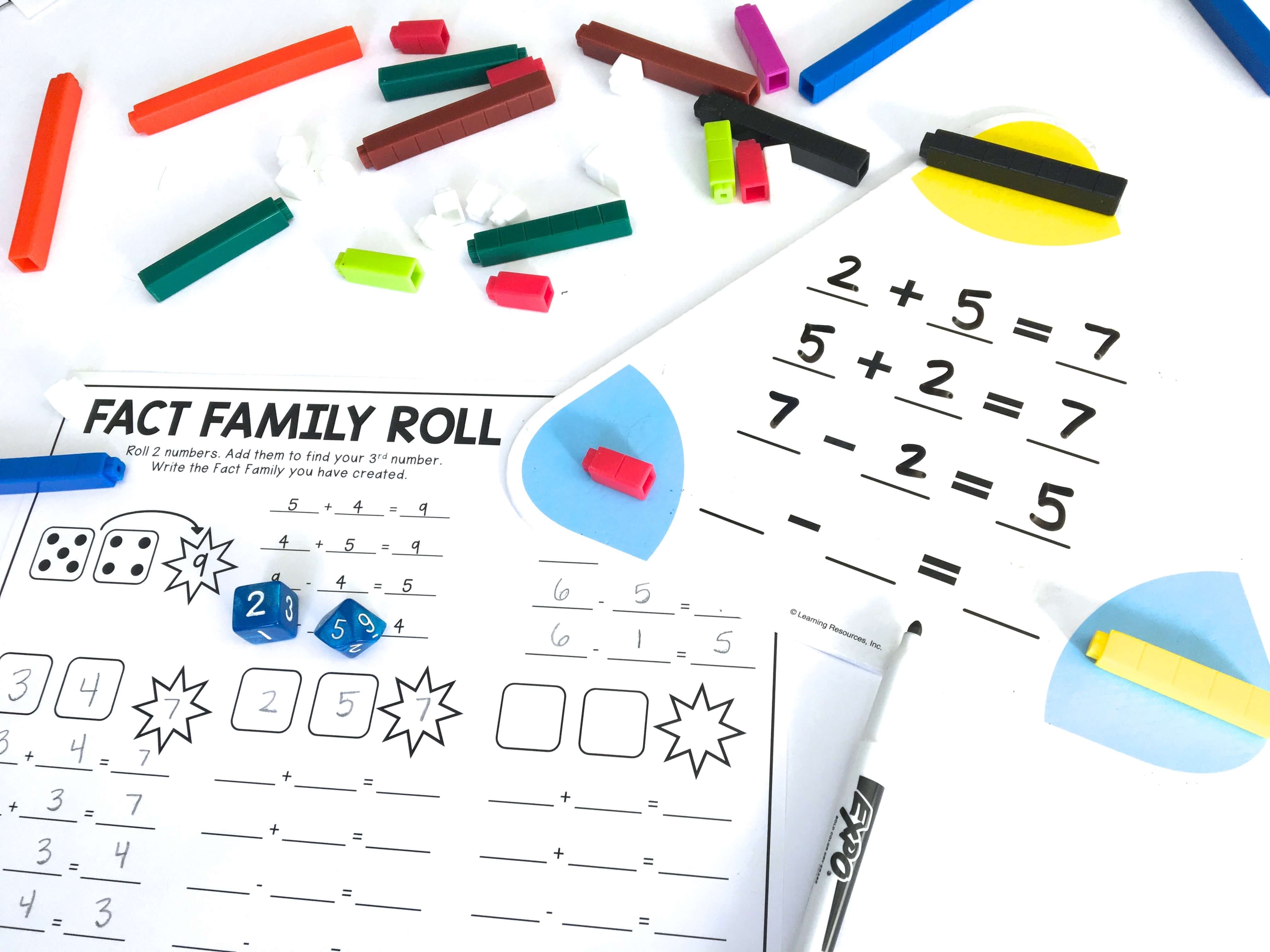
Why Math Centers?
Math Centers offer students hands-on, spiral review practice with skills that have been introduced and taught during our Guided Math groups. Additionally, working with a partner, centers allow students the opportunity to talk about their math thinking, apply math vocabulary, and hear how other people think about math. Additionally, when students visit math centers, I have the opportunity to meet with our Guided Math groups for intentional instruction. Plus, they are FUN! (Snag Kindergarten Centers here. 1st Grade Centers here. Snag 2nd Grade Centers here. And Print & Play Games Here.)
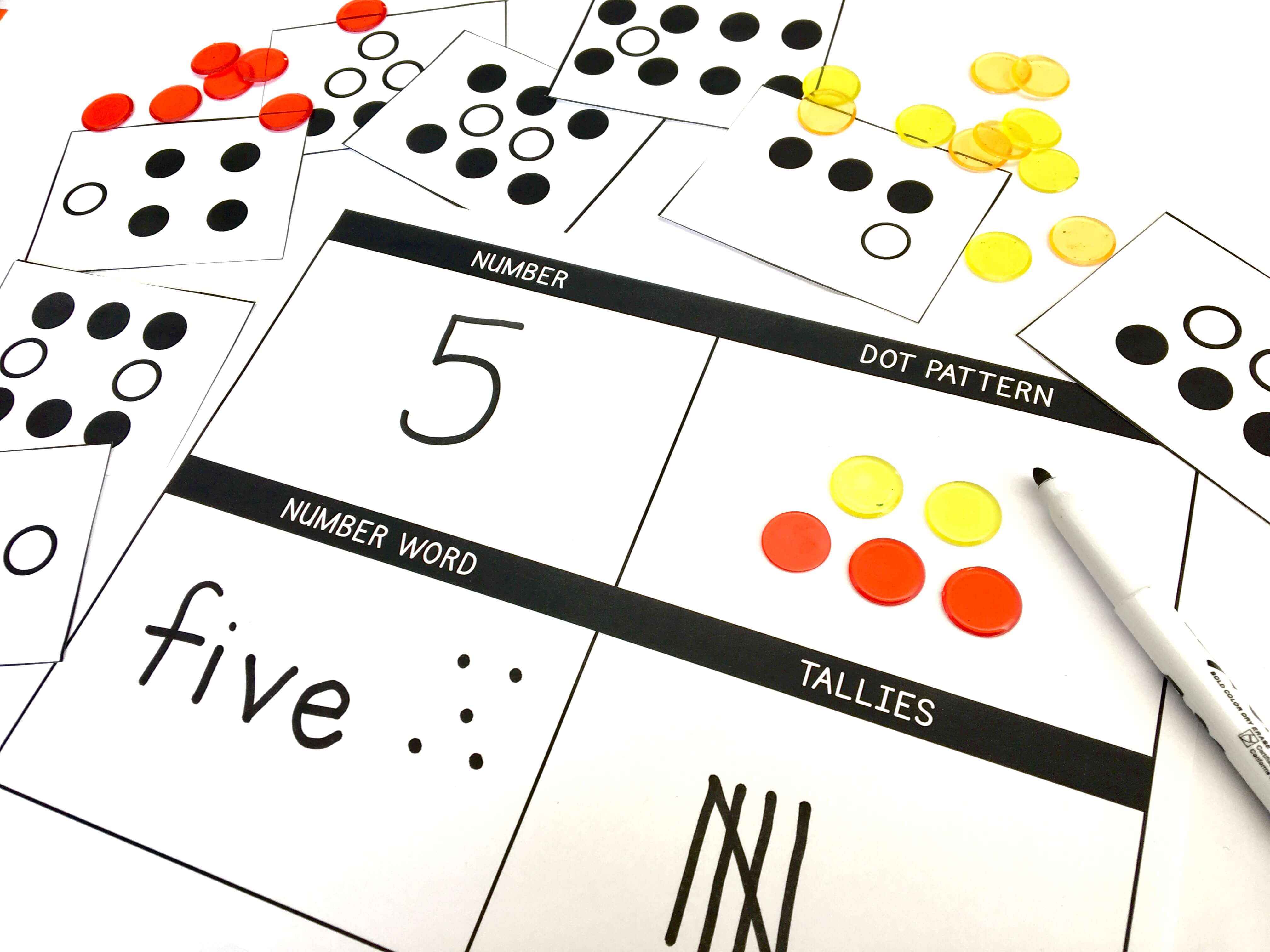
How Many Centers Do You Have?
Typically I keep 5-7 math centers out at a time. (Note – There is no wrong answer. Use as many or as few tubs as you need.) My first years in 1st grade, I stuck with 5 but last year I branched into 7 since I was changing them less often. Teaching a combination class, the green math tubs are for 1st grade and the yellow math tubs are for Kindergarten. (Check out my favorite tubs for math centers here.) Click here for Kindergarten Centers, 1st Grade Centers, and 2nd Grade Centers!
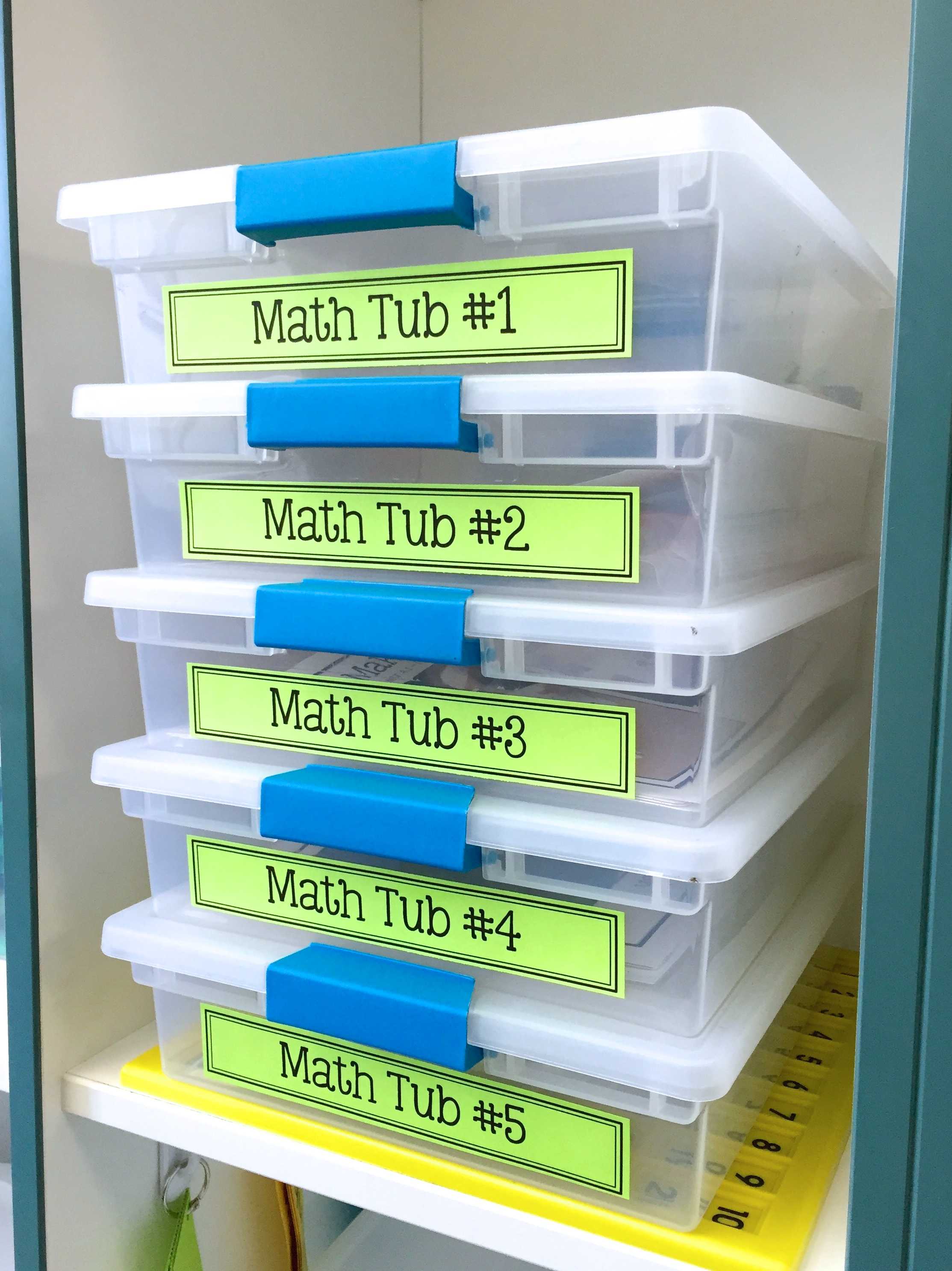
How Often Do You Change-Out Centers?
My first 2 years of teaching 1st grade, I changed-out centers every.single.week and this worked for me. Each Friday during planning, I would swap-out manipulatives and visual directions, and print new Math Logs. Turning into a K/1 Combination Class this past year, I had two sets of math centers (Kinder and 1st Grade) and quite frankly, it was too much to try to change out both sets every week, so I alternated. One week I changed out 1st grade centers and then the next week Kindergarten centers. That means each grade was changed-out every two weeks, and you know what?!? It was OKAY! The world did not end, our centers were not out of control, and my students loved being able to visit their favorite centers twice.

What Does it Look Like as You Change Centers?
A hot mess. But really friends, it’s not pretty and it doesn’t need to be. When I change-out centers I first pull the sleeves from my binder. I try to batch tasks so I pull all 5 centers first. Then, I empty all 5 tubs. After all 5 tubs are empty, I slide in the visual directions and recording logs. Finally, I add-in manipulatives. Although students are always welcome to grab additional or different manipulatives, I like to include the minimum hands-on materials they will need.
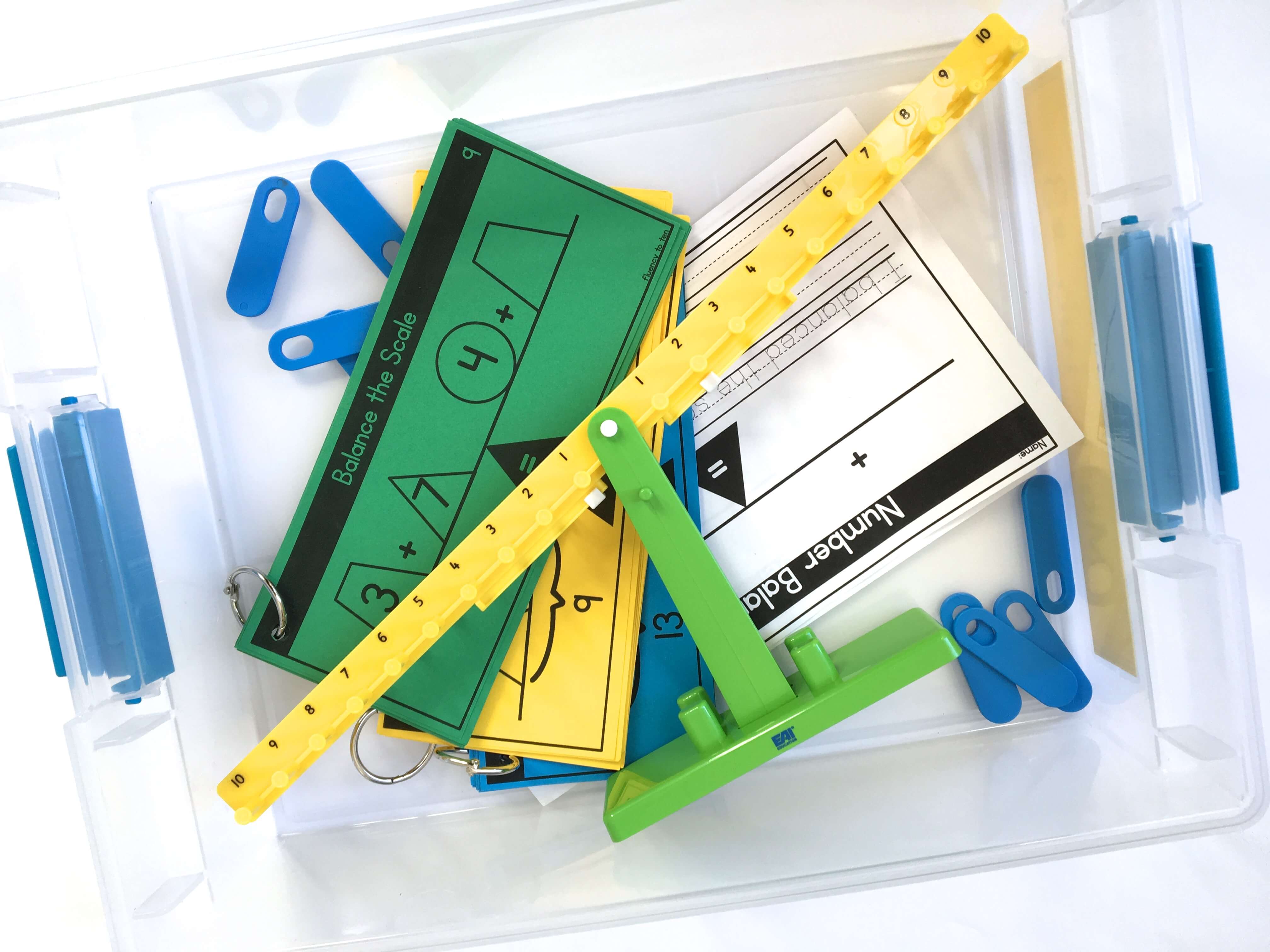
How Do You Know Which Centers to Pull?
Great question! All of the centers I pull are spiral review. Our centers are meant to provide students just-right, hands-on practices with content we have already covered. Therefore, material we are learning RIGHT NOW at teacher table WILL NOT be in our centers. Typically I like to wait until the next week (or two) to introduce the skill as an independent or partner center. Click here for Kindergarten Centers, 1st Grade Centers, and 2nd Grade Centers!
Creating “Staple” Math Centers
So, I’m definitely a routines girl. I love having a system, so when it comes time to change-out centers I don’t have to spend inordinate amounts of time pulling them. Typically my centers follow this routine –
- Read About Math – Using QR codes or Epic for Kids will read books about math. Typically I pull books about the topic we are currently learning about. Since the books are being read aloud to students they don’t have to (but can be) spiral review.
- Versatiles – Versatiles are a fun, self-checking center. They are made from ETA Hand2Mind and are perfect for independent or partner work. Since I own several of the math Versatile books, I’m able to pull the just-right pages for all of my groups. I slip the pages into sheet protectors, add a blue/green/yellow sticker (so groups know which sheet to pull), and place them in the tub!
- 120s Pocket Chart – From September on, our 120s Pocket Chart becomes a staple in our center routine. It’s perfect for practicing number order, place value, making 10 to add/subtract, as well as, number representations. With 6 different levels of playing cards, students work in partners to finish the 120s chart before the timer rings. It normally takes students 4-8 tries the first time with the set of cards to get all 120 cards in the right places, but they love the challenge and the chance to “level-up”!
- Card/Board Game – We love board and game games and they make a super simple center! From Making 10 Go Fish to Snap it Up, we are ALL about game. Check out some of our favorite board games here.
- Print & Play Game – We always need additional practice in addition and subtraction, so these these 30 print and play games are PERFECT and simple for getting more practice in. Just add dice and we are good to go!
- Spiral Review Tub
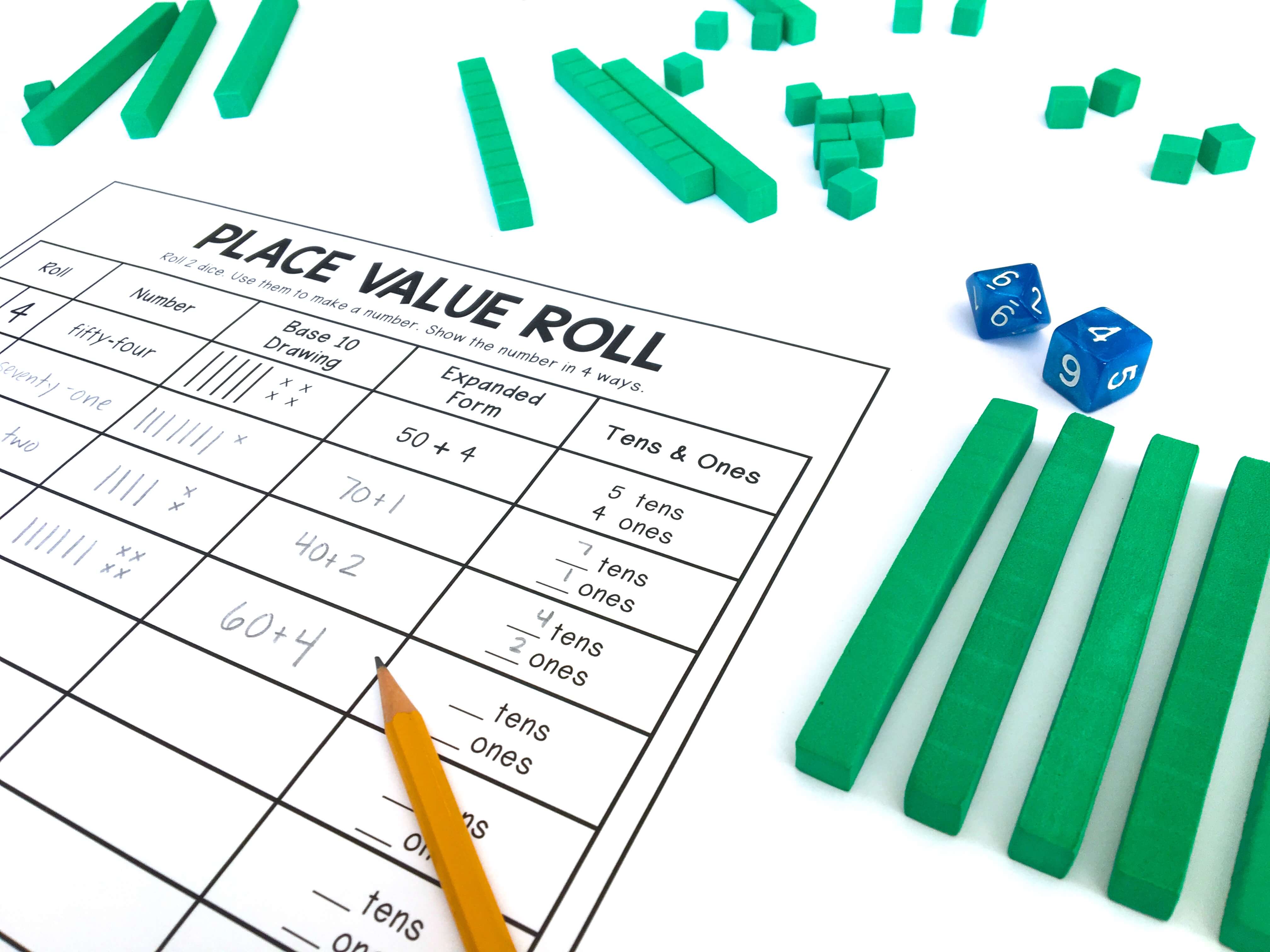
When Do You Teach Your New Centers?
Awesome question. The great thing about creating “staple” centers is that once I have initially introduced a center (read about math, versatiles, print and play etc) I don’t have to teach it again. All I need to do is change-out the skill on which students are working. At the VERY beginning of the year, we introduce new centers whole-group and practice in partners, but after we have learned about that first set of centers, I shy away from whole-group introduction. Typically I introduce centers in 1 of 4 places –
- Morning Tubs – Students think math is a game and they love centers. I leverage this for the best! If I want to teach a new center, I will pull one table group each morning during Morning Tubs and teach them the game/activity. By the end-of-the-week, I’ve taught all 5 of my table groups how to play and we’re ready to introduce it the following week.
- Indoor Recess – I will also introduce math centers during Indoor Recess. Unlike Morning Tubs, indoor recess math-learning is completely by choice. To make this choice incredibly enticing, indoor recess is when I introduce our math board games. Students LOVE the chance to learn a new game, as well as, the opportunity to try to beat Ms. W. (#IDontLetKidsWin)
- Guest Teachers – When there are Guest Teachers (aka Subs) in the building, it’s the perfect time to introduce students to a new center. Students have the opportunity to practice with a partner with an adult present and the same math center is played with each group (just with different levels of differentiation) making it a little simpler for the Guest Teacher to manage. The only ‘catch’ with having Guest Teachers introduce math centers is that you must leave EXPLICIT, step-by-step instructions on how to play the game, preferably with visual directions already made so students have a picture of your expectations.
- Small Groups – Honestly, I share this hesitantly because our guided-math, small-group time is so incredibly precious. I would NEVER want it to become a time in which teachers are pulling a game, placing it at Teacher Table, and sitting back. With that said, if I can use the game/center as an intentionally-planned, guided activity (in which students have manipulatives in their hands, are actively engaged in math talk, and are building math knowledge…not looking for a right answer), I know I can introduce and scaffold it at small-group.
Storing Math Centers
When math centers are not being used in a tub, they are storied in 2 3-inch binders in dry-erase sleeves. The visual directions go on the top for easily flipping and then, recording logs go in the back. Any playing cards or number cards needed for the center are put in a plastic bag in my “Randoms” tub. I don’t like to put these into the plastic sleeves because it makes the binder SUPER bulky and causes things to fall out. Any math manipualtives needed for the centers go back into our labeled bins and I pull them as I put out new centers.
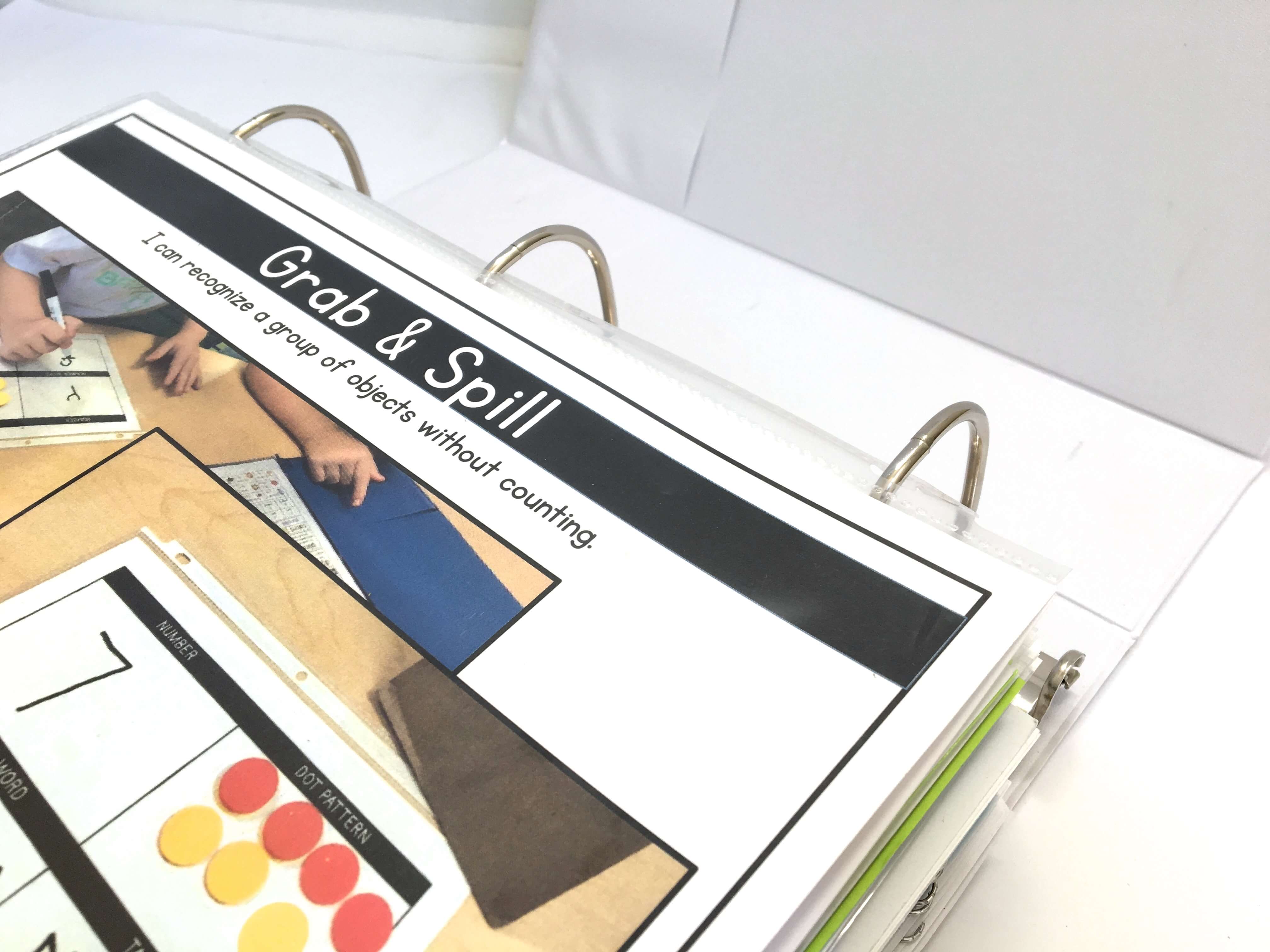
Tracking My Centers
Over the years, I’ve found that if I don’t keep a running list of centers and games I make it to May and realize there are a number of awesome centers we’ve never used. I write the centers under the Common Core Standard that it reviews/practices. Then, each time I pull that center I write the date in which it was used. We do use centers more than once, but when we do I like it keep them 3-4 weeks apart.
Managing Student Papers & Keeping Students Accountable
When students are not at my Teacher Table, they are making choices – centers, math journal, or technology. Since we do 4 rotations, students must visit all the rotations each day, in any order they choose. Note – sometimes students need to stay at a center/journal for more than one rotation and have to miss a technology rotation. That’s totally fine! (Snag a math rotation board here for free.)
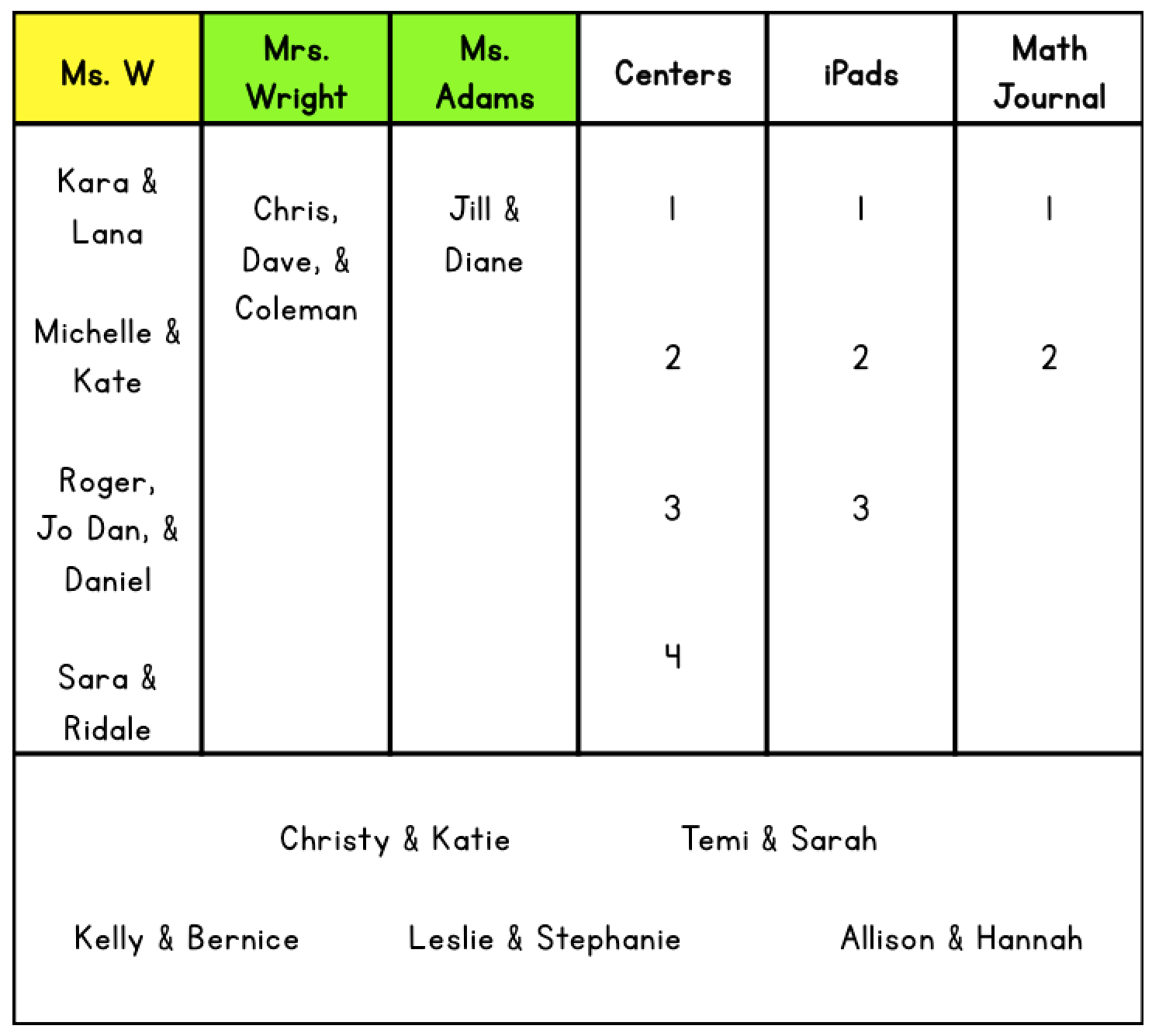
As students make their choices, they record/color which day they visited that rotation on our logs. Then, any work or recording log gets attached to this log. The logs are checked by me at during our Math Reflection Time and they go home each time I switch out centers.
So friends, this is the nitty-gritty of math centers. What do you think? What other questions do you have? What works for you? I’d love to hear from you! Also, snag math ready-to-go centers for your classroom –
30 Addition and Subtraction Print & Play Math Centers
Math Logic Puzzles for Early Finishers
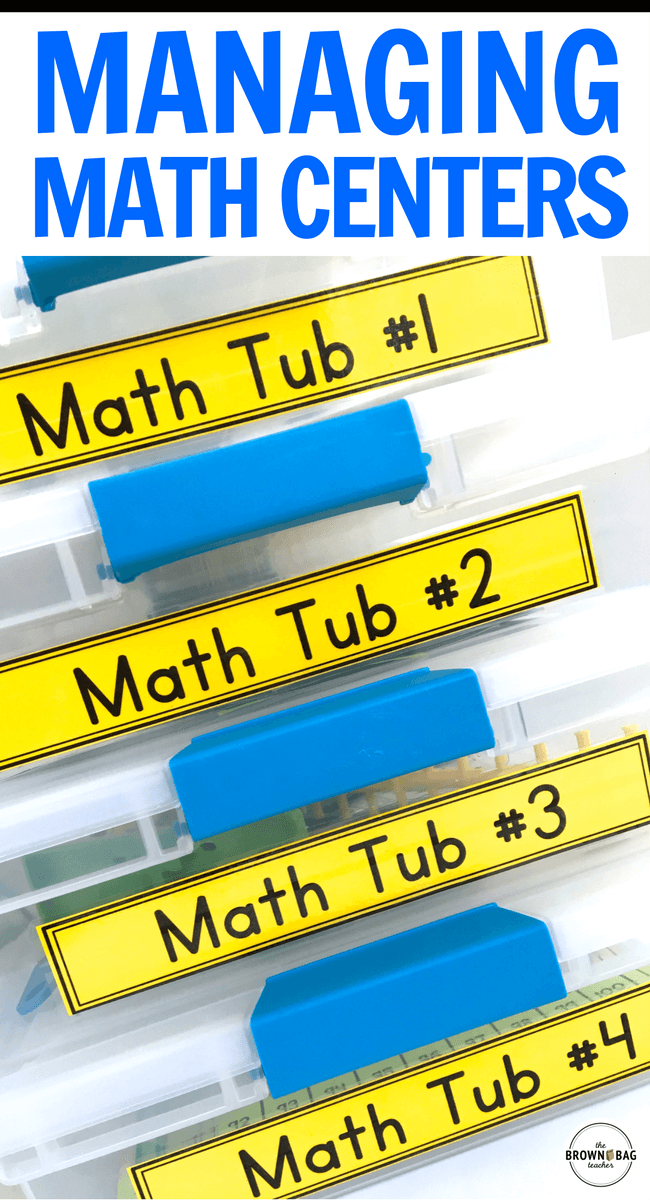
Get Free Teaching Resources!
Join me for weekly classroom updates and free resources that are just-right for your guided math classroom!
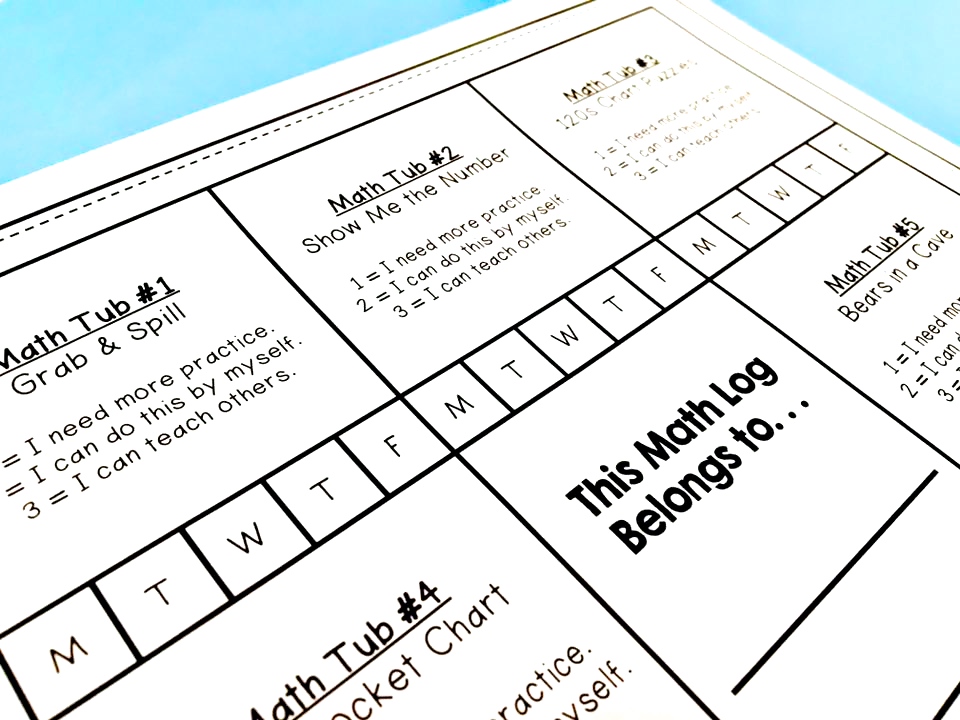

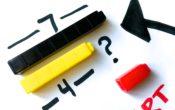
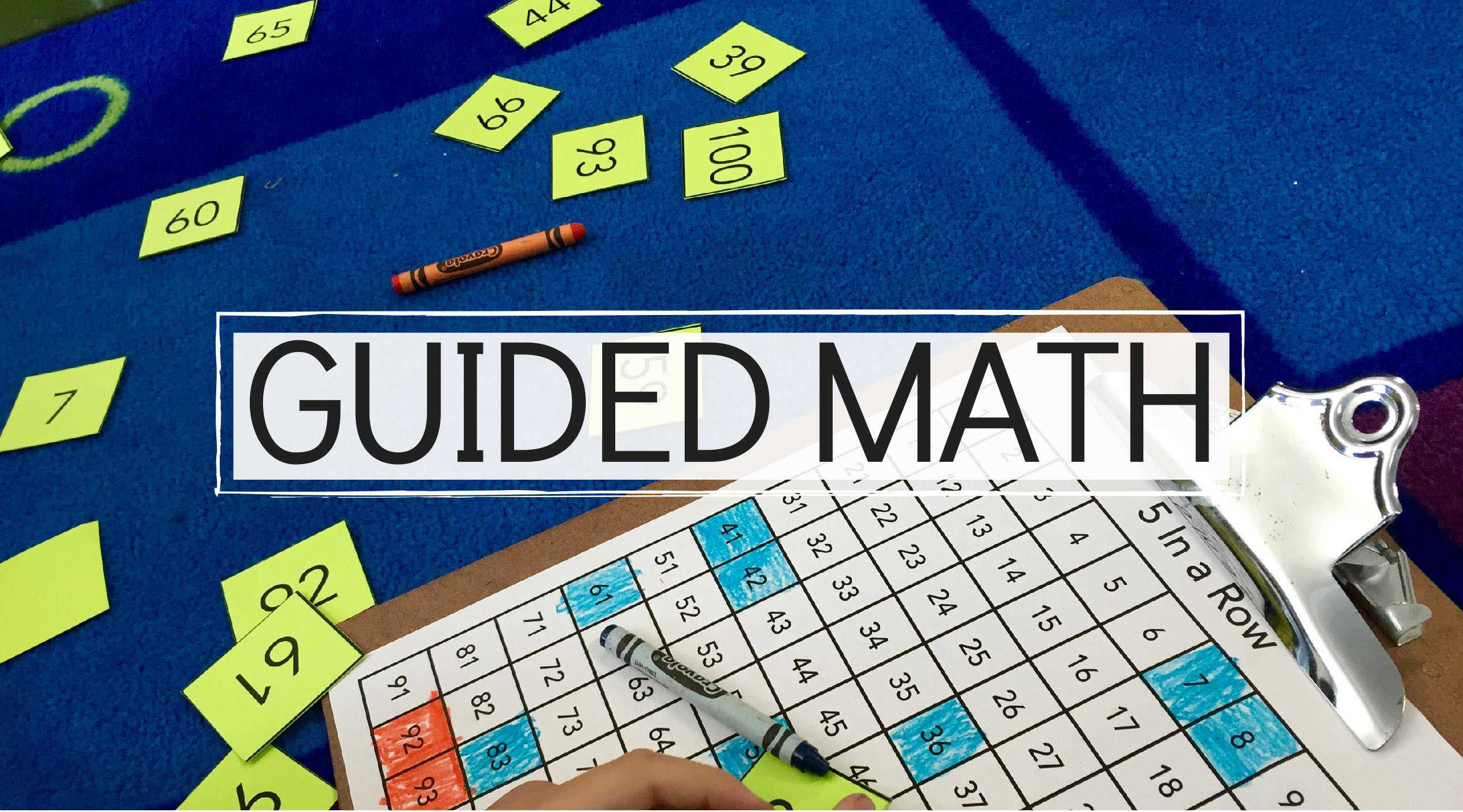
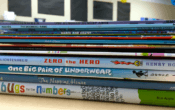
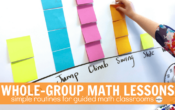
What is your favorite font that you use for Tub labels and your print outs?
I like how straight, simple, and easy readability of your font.
Thanks!
KG Primary Penmanship. It’s my favorite!
Are the labels available anywhere to print?
Coinfx market is a big scam broker, i paid a huge amount of $70,000, they persuaded me, into putting more of my hard earned money with all hope to get profits in return, they won’t allow me to make a withdrawal of my investment, all because all they wanted is to steal my money, i got advised to file a refund case against them, which to my greatest surprise i was able to withdraw my money, i contacted a recovery expert { MORRISGRAY830@GMAIL.COM } and his team of recovery experts, they where able to assist me with the withdrawal of my money, and restore my funds, they are very responsive, and you can reach out to him for help also, i know am not the only one who has fallen victim, people out there might also need this information^^^^
It looks like the children score themselves as a 1,2 or 3 each time they do a math center. That’s a great idea! I am wondering what apps you use on the iPad during the technology center. I am also wondering what you do for math journal , you mentioned that once and this blog, but it doesn’t look like it’s on your center rotation . And lastly, for keeping children accountable I have been using this amazing app called Seesaw. It is a wonderful digital portfolio where children take pictures of their work to show they have done it and done it well . I am excited to get started with math centers and thank you for your inspiration!
Hey Tricia! I pull from lots of places for Math Journals. I haven’t found one (or even two) resources I’m completely in love with. In terms of technology, we love using Prodigy, DreamBox, and SumDog. We also do Number Talks using FlipGrid which has been great!
Hello,
Thank you for your comment to share your ideas with us.
I wanted to know where did you get the plastic containers for the math centers.
Amazing and helpful!!!
I always love the simplicity in the way you do things! Thank you for sharing ☺️
Thank you so much! This information is very helpful and straightforward. Are the tub labels available somewhere??
Thanks in advance!
Can you tell me where I can find a list of the math songs you use between rotations and the words to them? Do you play the videos or just sing them? Also, do you keep a countdown going on the board?
Thank you
Are you ready to entrust your report writing to a service that is poorly rated? Browse the https://www.writingpapersucks.com/homeworkdoer-review/ page to find the detailed information about the service and its specifications.
An engaging and successful learning environment must be managed math centers effectively. It enables teachers to give children the assistance they need while promoting independence and mathematical competence. A part from that it is a new fashion look sport tek hooded sweatshirt that is always changing to reflect cultural influences and personal preferences
Thank you so much! This information is very helpful and straightforward.
mendix course
nice blog !
Roma famous slot game The most on our website, joker gaming a money-making game that counts combos. that gives a high distribution rate and has a very frequent win rate It has made people popular to play until now. Get rich easily with this game that has a high payout rate, real payouts, real giveaways, no cheating, trustworthy, 100% safe. If you sign up, you can receive a bonus immediately. And there is also a support team available at all times, contactable 24 hours a day.
Hi everyone, I have been seeing a lot of people making testimony about how they recover their stolen coin back. Its true you can recover your lost funds back, I am a living testimony. While i was trading on Bitcoin on the 22nd of February 2023, I unexpectedly lost my $570,000, I was so confused, frustrated and depressed and had no idea on how to recover back my lost funds. After sometime I did an extensive research on how to recover stolen Bitcoin funds and I came across several referrals and Ads that had gotten help from `Alien Coin Recovery. I made contact immediately and I was actually very impressed with the service that i got, not only did I recover back my $570,000, I also got back my hacked social media accounts. If you are currently passing through such a nerve racking situation don’t stress out or worry anymore, just contact Alien Coin Recovery via Email/WhatsApp: (info @ aliencoin . co) (+12106461486) for all your hacking/recovery problems, rest assured you will recover everything you lost and be happy again. Thank you.
สล็อตสล็อต เว็บ ตรง pg slot pg slot ค่ายเกมสล็อตออนไลน์ที่กำลังเป็นที่นิยมจากนักเล่นพนันทั้งโลก ด้วยประสิทธิภาพของตัวเกมที่ตามมาตรฐานตามระดับสากล ก็เลยมีความปลอดภัยสูง PG SLOT ทั้งยังในหัวข้อการจัดเก็บข้อมูลของผู้รับและก็ประเด็น
Coinfx market is a big scam broker, i paid a huge amount of $70,000, they persuaded me, into putting more of my hard earned money with all hope to get profits in return, they won’t allow me to make a withdrawal of my investment, all because all they wanted is to steal my money, i got advised to file a refund case against them, which to my greatest surprise i was able to withdraw my money, i contacted a recovery expert { MORRISGRAY830@GMAIL.COM } and his team of recovery experts, they where able to assist me with the withdrawal of my money, and restore my funds, they are very responsive, and you can reach out to him for help also, i know am not the only one who has fallen victim, people out there might also need this information=====
Thank you for sharing your insights on managing math centers! As a primary teacher, the workload can indeed be overwhelming, but your approach to creating predictable patterns and routines is so practical. Math centers offer valuable hands-on practice and collaboration opportunities for students, while also allowing teachers to focus on guided instruction. Your system sounds like a great way to streamline planning and make math centers more manageable!sanhangsale.com
I love your approach to managing math centers! It’s so important to establish predictable patterns and routines to streamline planning and reduce overwhelm. Math centers provide invaluable opportunities for students to practice and apply skills in a hands-on, collaborative setting. Your system not only allows for focused guided instruction but also ensures that students are engaged and having fun while learning. Thanks for sharing your tips and ideas!rankingpark.net
Thanks for sharing your strategies for managing math centers! It can definitely be overwhelming to plan and prepare for multiple lessons and activities each week, but your approach of creating predictable patterns and routines is a game-changer. Math centers provide students with essential hands-on practice and collaboration opportunities, while also allowing teachers to focus on targeted instruction. Your system sounds like a fantastic way to make math centers more manageable and effective!raozat.com